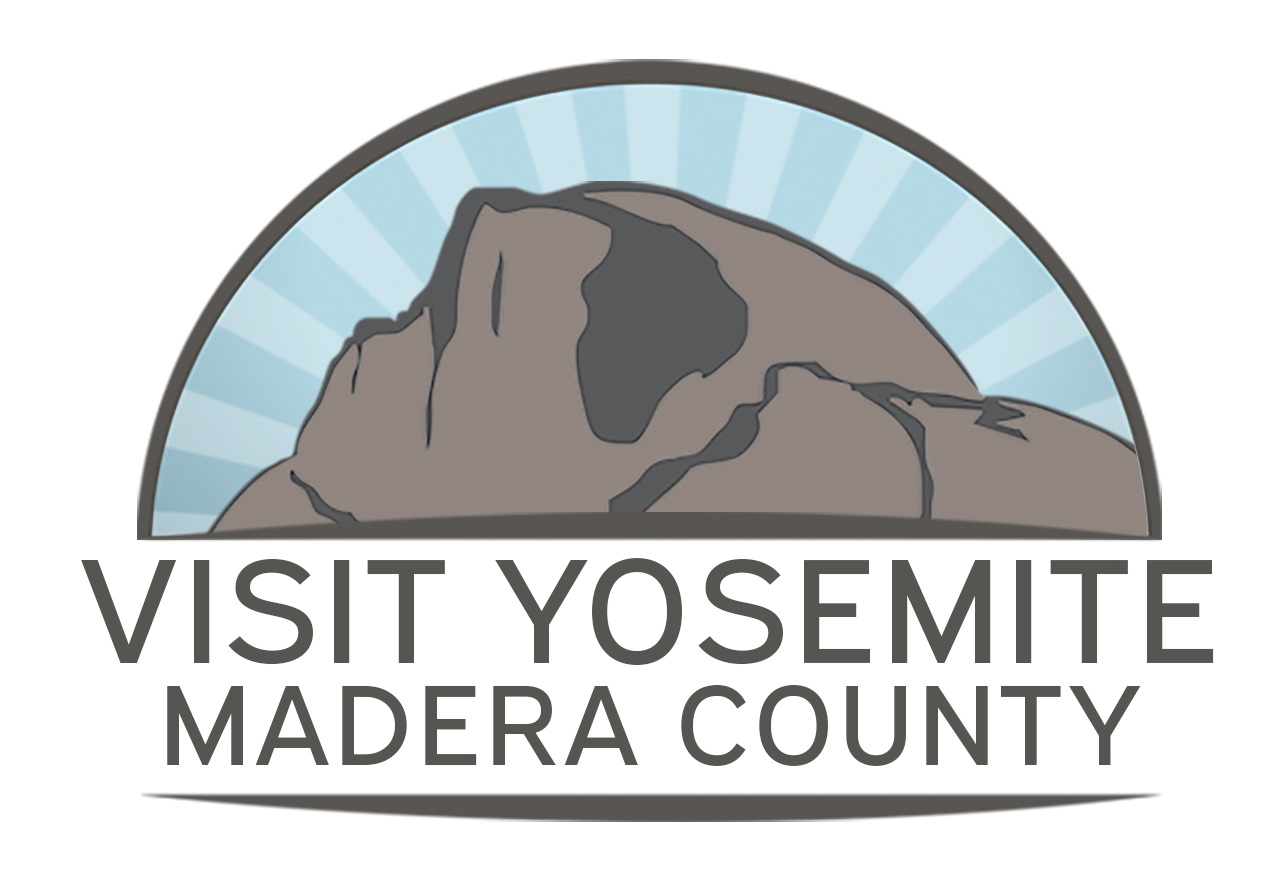A Guide To Yosemite's Waterfalls
There are very few things on this planet that from the smallest kids to the oldest grandparents and everyone in between can agree upon… except for waterfalls. There’s something special about hearing, seeing, and even smelling moving water. It relaxes us and yet re-energizes our souls. And when it comes to waterfalls, Yosemite stands head and shoulders above the rest. From some of the tallest in the world to more secretive hidden gems, there really isn’t anywhere that can compare to the sheer number of waterfalls as there are in Yosemite.
Yosemite Valley
Yosemite Falls
Location: Yosemite Valley
Height: 2,425 feet
Flows: Approximately November through July with peak flow in May
Yosemite Falls can be seen throughout a large portion of Yosemite Valley, including from the Yosemite Chapel, Yosemite Valley Lodge, and even high above the valley from Glacier Point. One of the tallest in the world at a total of 2,425 feet and the tallest in all of North America, it is actually made up of three separate drops:
• Upper Yosemite Fall (1,430 feet)
• Middle Cascades (675 feet)
• Lower Yosemite Fall (320 feet)
As large and as significant as Yosemite Falls is, it's a seasonal waterfall. By late summer in all but the wettest of years, the granite-lined watershed that feeds Yosemite Creek and Yosemite Falls has shed all of the snowpack from the winter, and the falls dwindle to nothing but a trickle. It may, in fact, be completely dry for months until the rains come again. If you visit in the winter, look for the huge snow cone that forms at the base of the upper fall. In spring, listen to the roar of the massive volume of water flowing down from high above the valley and, during full moon nights in April through June (and sometime into July depending on how much water is flowing) you can witness the magic of Moonbows!
Bridalveil Fall
Location: Yosemite Valley
Height: 620 feet
Flows: All year with peak flow in May
As you enter Yosemite Valley, one of the first falls you’ll see is Bridalveil Fall. It should come as no surprise it's one of the most prominent within the granite walls of the valley. As the name describes it, when there’s a breeze flowing, the mist that wafts off it creates something that would be similar to a 'bride's veil' and thus the name Bridalveil. The valley's native inhabitants, the Ahwahneecee, named this fall Pohono, meaning "Spirit of the Puffing Wind".
Sentinel Falls
Location: Yosemite Valley
Height: 2,000 feet
Flows: Approximately March through June with peak flow in May
Just west of Sentinel Rock, this precipitous peak of rocks was named by the Whitney Party because of the high tower-like position it occupies. This long series of cascades consists of six major drops with the largest being over 500 feet tall. Despite its immense height, in most years it’s usually dry by the end of July.
Ribbon Fall
Location: Yosemite Valley
Height: 1,612 Feet
Flows: Approximately March through June with peak flow in May
While Yosemite Falls is the tallest, Ribbon Fall has something it doesn’t. It’s the highest free-leaping fall in all of North America. Primarily fed by snowmelt over granite rock, this is a great one to see in early spring. Learn why we consider Ribbon Fall one of our "5 Lesser Known Waterfalls in or near Yosemite".
Horsetail Fall
Location: Yosemite Valley
Height: 1,000 Feet
Flows: Approximately December through April
Horsetail Fall's claim to fame is the legend of the Horsetail Fall Event. It's a natural phenomenon that occurs typically in mid-February when meteorological and hydrological characteristics align to create what looks like a ribbon of fire when the rays of the setting winter sun light up the water and mist, first golden and then fiery red. Horsetail Fall drops off the east side of El Capitan and was known in Ansel Adams's time as El Capitan Fall. For the full scoop on Horsetail Fall and the "firefall" phenomenon, including any special restrictions that the park may have in place, check out our article “What to expect when traveling to see Horsetail Fall - Yosemite’s Natural Firefall".
Nevada Fall
Location: Yosemite Valley
Height: 594 feet
Flows: All year with peak flow in late May
The pinnacle of the Mist Trail, it is one part of what many call nature’s “giant staircase.” Located below the giant granite dome known as Liberty Cap, Nevada’s unique shape is one that will help you identify it quickly. The first third of the water falls freely finishing off on a steep slick-rock slope. The water hits the granite with such a force creating a turbulent, whitewater appearance and a great deal of mist... which led to its current name (Nevada is a Spanish word meaning "snowy").
Vernal Fall
Location: Yosemite Valley
Height: 317 feet
Flows: Peaks in late May but flows all year though mid to late summer it narrows and separates into one, two, or three falls as water flows decrease
Just below the frothy Nevada fall is Vernal Fall. The first of the waterfalls in the legendary Mist Trail. Especially in the spring, you’ll truly understand why this hike is called the “Mist Trail.” In short, be sure to bring a raincoat even if it’s sunny. These two mighty waterfalls form a cascade in which the Merced River flows down into the valley and create what is called the “giant staircase.”
Illilouette Fall
Location: 2 miles downhill from Glacier Point
Height: 370 feet
Flows: All year with peak flow in late May
Another one of our hidden gems in Yosemite, Illilouette Fall can be glimpsed from the legendary Mist Trail, but to really get a good view of it, you need to do some hiking. From Glacier Point, you’ll descend down about two miles to get to the top of the falls. But be forewarned, the trek back up to Glacier Point is quite the climb.
Royal Arch Cascade
Location: Yosemite Valley
Height: 1,250 Feet
Flows: Approximately December through April
Within walking distance of the famous Ahwahnee Hotel, you will typically find a stringy ephemeral fall that lightly dances it way down a granite wall. If you’re lucky enough to visit during a heavy thunderstorm be sure to head here. The sudden downpour can expand this normally tranquil and ephemeral fall to where it takes up the majority of the granite wall it resides on. A sight to behold, that’s for sure!
Silver Strand Falls
Location: Yosemite Valley
Height: 574 Feet
Flows: Approximately December through April
In a valley with so many amazing falls, there’s of course going to be a few that are overlooked. One of them on the top of this list is the Silver Strand Falls. Due to its location, when visitors peer from the Tunnel View Overlook their gaze focuses on El Capitan and Bridalveil Fall. If you do make it this spot made famous by Ansel Adams be sure to look up above the Wawona Tunnel and you’ll be gifted an opportunity most others miss – the Silver Strand Falls.
Southern Yosemite Region
Chilnualna Falls
Location: Wawona
Height: About 2,200 feet
Flows: All year with peak flow in May
Although the Mist Trail is a must for waterfall seekers, another impressive hike to consider is Chilnualna Falls trail. The 8.4-mile roundtrip journey up to the summit is strenuous, but due to that, the volume of other hikers is a trickle compared to the volume in the valley. The reward, especially during peak runoff, is the five tiers ranging from thirty to three hundred feet.
Hetch Hetchy Region
Wapama Falls
Location: Hetch Hetchy
Height: 1,400 Feet
Flows: All year with peak flow in May
The northwest corner of Yosemite was one of John Muir’s favorite spots to ruminate. In the 1920’s, the O'Shaughnessy Dam was built creating the largest single body of water within the park. While you can see the falls from the parking lot, the easy hike to the waterfalls is worth the visit. Be sure to bring lots of water since most of the hike has very little shade.
Tueeulala Falls
Location: Hetch Hetchy
Height: 880 feet
Flows: Depends on when the last snows of the year fall – as early as April or as late as July
While Wapama Falls has a good flow all year-round the Tueeulala Falls are bit more of a challenge to see cascading versus it being a wisp. Since it's fed from snowmelt, the two-month window is based on how big the snowfall was AND if the snowmelt has begun. If you do time your visit correctly you’ll be gifted with seeing a cascade that drops free for 600 feet, hits a ledge, then slides steeply down 280 feet further.
Rancheria Falls
Location: Hetch Hetchy
Height: 150 feet
Flows: April through July
Albeit shorter but just as beautiful as its bigger cousins in Yosemite Valley, it is a great option for early spring. You can either see it via an enjoyable four-mile hike or combine it with a tour of the Hetch Hetchy Falls (Wapama and Tueeulala) for a eleven mile journey. Featuring a series of cascades that zip through a canyon for over a thousand vertical feet, the biggest of them is the Rancheria Falls themselves.
Waterwheel Falls
Location: Tuolumne River
Height: N/A – It SHOOTS the water up at least 30 feet in height
Flows: All Year but peak flow in May
What might be the most unusual waterfall in Yosemite is just as the name describes it – a waterwheel. That’s when water jumps into a groove in the earth and when it leaves this depression it explodes out of it with a fury into the sky before continuing downstream. In contrast to LeConte falls which contain many small and medium-sized waterwheels, this one is a MASSIVE one. While the “Grand Canyon of Tuolumne” hike is a long one, around 17 miles round-trip, you’ll be able to see the LeConte and California falls before the amazing spectacle known as Waterwheel Falls.
Tioga Road and Yosemite's High Country
Snow Creek Falls
Location: Tenaya Canyon
Height: 2,140 feet
Flows: Approximately March through June with peak flow in May
Are you looking for an “elusive” waterfall that takes a bit of work to see? Look no further than Snow Creek Falls. Located in the very eastern end of Yosemite Valley these falls are a tiered set of seven drops that twist and turn their way down 2,140 feet to the valley floor. Unfortunately, you can only really get a small glimpse of what is the second tallest waterfall in Yosemite from the valley (by taking the Mirror Lake Trail to the Snow Creek Trail in Tenaya Canyon). To really see this falls, you'll have your work cut for your - the best vantage point is the top of Half Dome!
Pywiack Cascade
Location: Tenaya Lake
Height: 600 feet
Flows: Approximately March through June with peak flow in May
"Py-we-ack" in the native language means "glistening rocks," named after the abundance of glacial polish in the basin. Located near the upper end of Tenaya Canyon it sometimes goes by another name – Slide Falls. Similar to Snow Creek Falls since it’s on the same creek this one is a bit elusive as well and takes some work to see. While you can see Pywiack Cascade from Glacier Point you have to be VERY observant to find it since its nearly six miles away. For a closer vantage of this swash-buckling cascade in between two granite walls you must take a six mile round-trip hike from Olmstead Point. THIS IS NOT a hike for beginners and requires caution since its over VERY rugged terrain.
Know Before You Go
Staying Safe When Experiencing Yosemite’s Waterfalls
Nearly four million visitors come to Yosemite National Park every year to take in the scenery and, of course, the waterfalls. If you do visit during peak flow season (spring) be aware that rivers and creeks will be swollen by runoff from snowmelt and are dangerous. Powerful currents, icy water, and river obstructions can, and unfortunately, have trapped or killed the unwary. So be aware of your surroundings. To add to that, please stay on the trails and off the rocks. Water-polished granite, which is the majority of the rock found within the park, is slippery even when dry and can get dangerously slick with just the slightest bit of moisture. Rock hopping up the creek to get closer to the waterfall itself may look like a very inviting thing to do (especially during the warm summer months) but accidents and severe injuries have occurred to many who have attempted it over the years. Please #RecreateResponsibly and play it safe!
Be Prepared
While the National Park Service does its best to maintain and provide a safe environment, this is still the wilderness, so be sure to always carry extra water, food, and an extra pair of socks. It’s a good idea to pack a raincoat, especially if you’re heading up the Mist Trail. These waterfalls are thundering during peak flow and there is an excellent reason why the trail is called the Mist Trail. If you take on the vertical challenge of hiking something like the Yosemite Falls Trail, water (and lots of it) and sunscreen are vital for safely and successfully tackling the over 3200' climb.
All Levels Of Hiking To See Waterfalls
Before you set off for your adventure to see waterfalls, plan your outing to match your physical abilities. There are hikes for everyone ranging from easy to strenuous. A great first-timers hike that’s wheelchair accessible too, is lower Yosemite Fall. For a moderate challenge, check out the Panorama trail, starting at the top of Glacier Point the two-mile trek features both Nevada Fall and Vernal Fall and one of the lesser known waterfalls in the park, the 370 foot Illilouette Fall.
In summary, Know Before You Go by doing your research on the hike and its difficulty. Remember, it’s always better to set aside more time to get back to the trailhead. With that said, happy waterfall hunting!
Map of Yosemite's Waterfalls
There’s a reason why Teddy Roosevelt was inspired to create the National Park System when visiting Yosemite. Jaw-dropping granite cliffs, an assortment of wildlife, and of course booming waterfalls. We hope this waterfall guide helps begin your journey into exploring one of the many wonders Yosemite has to offer.
______________________________________________________________________________________
Like what you see? Save any of these pins (or possibly all of them) to your travel planning board(s) to give you an easy way to find your way back here! Also check out our other blog posts as well as itineraries for more ideas and pins!
About The Author:
Alex founded localfreshies.com® in 2014 to be the #1 website providing the “local scoop” on where to eat, drink & play in mountain towns throughout North America. When he’s not writing and executing marketing strategies for small businesses & agencies, he’s in search of the deepest snow in the winter and tackiest dirt in the summer.






































 Alex Silgalis
Alex Silgalis


